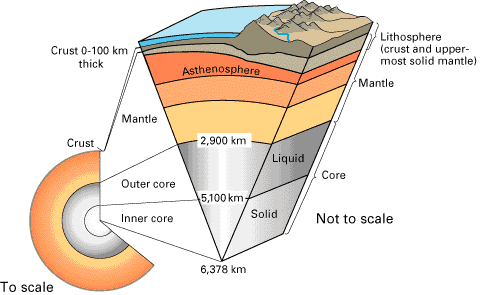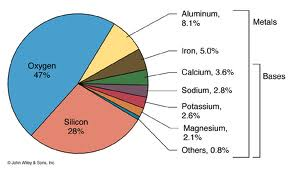Iron, Manganese, & Calcium/Magnesium
– potential problem for water supplies.


Iron is a main component in much of the earths surface structure. Below the crust is the mantle, a dense, hot layer of semi-solid rock approximately 2,900 km thick. The mantle, which consists of more iron magnesium, and calcium than the crust, is hotter and denser because temperature and pressure inside the Earth increase with depth. Because of the constant change in the earth plates and other changes in the earths structure, iron is an abundant mineral that is potentially in contact with aquifer and ground water. This creates the likelihood that iron will be dissolved or absorbed into the water supply. Iron is typically found in a reduced or dissolved state (ferrous) and is clear in the water. Not until this ferrous iron (Fe+) is pumped up from the groundwater well where it becomes unstable and has an opportunity to combine with oxygen, chlorine, chloramines or other components that potentially combines with the now unstable iron molecule reactive sites to precipitate and transform into ferric iron (Fe++) or rusty water. The iron generally does not begin to reduce to a precipitant until after the water is pumped up from the ground and into the water distribution system. If we introduce our water treatment at the point where the water is pumped up, and prior to chlorination, we can successfully prevent iron reduction or precipitation. The reactive sites on ferrous iron molecule would rather stabilize with our treatment and remain ferrous (dissolved and clear) than become a precipitated mineral (rusty water).
Iron can also be a component of mineral scale deposits (along with calcium and manganese) found on the interior surfaces of water pipe distribution lines. These deposits can not only reduce the volume of the internal pipe lowering carrying capacities, but they can sometime break loose to cause rusty water complaints. Our water treatment will slowly over time dissolve these mineral deposits until it can no longer chemically disperse the scale. At this point the treatment will lay down a thin coating to create a barrier between the water and the pipe surface to effectively reduce pipe corrosion
Please review our various water treatment formulations to determine the one best for your application. Our Sequest-All, Sequest-All EMC and Linear2 are excellent iron sequestrants for potable water systems and irrigation systems.
